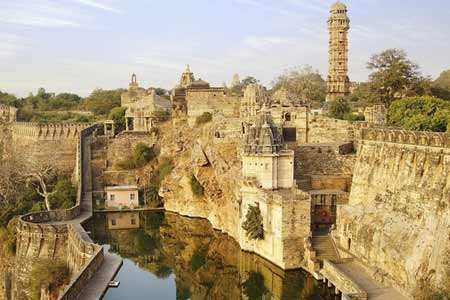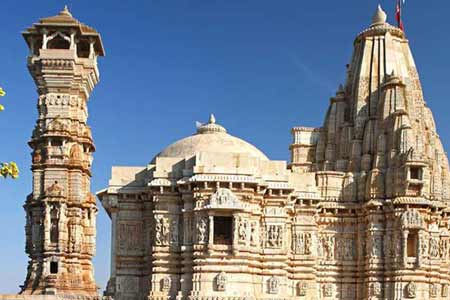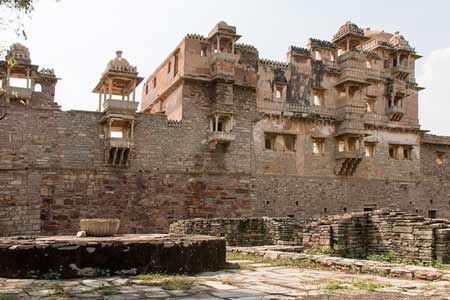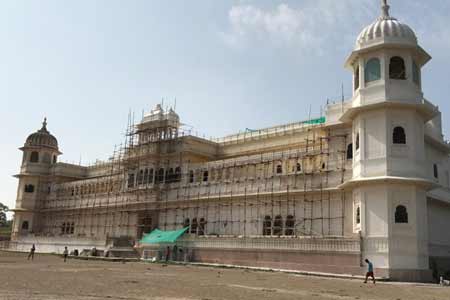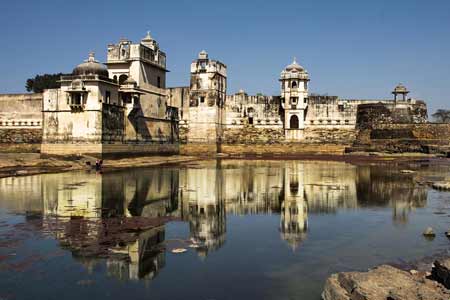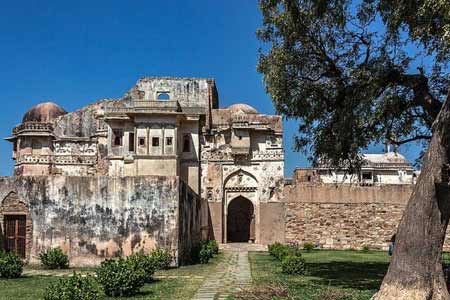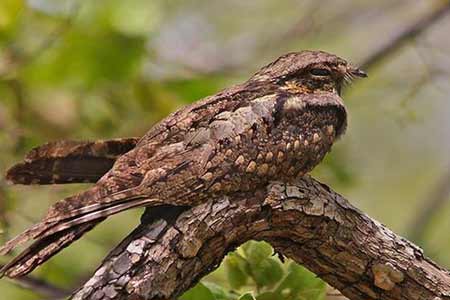
Ratan Singh Palace
Ratan Singh Palace or Ratan Singh Mahal is a large historical palace situated in Chittorgarh Fort. Located along the Ratneshwar Talab, this palace is one of the top places to visit in Chittorgarh.
The Ratan Singh Palace is attributed to Rana Ratan Singh II (AD 1528 - 31). It is rectangular on plan and enclosed by a high wall. The main entrance is facing east through a lofty arch crowned with two pillared chhatris. The palace comprises a courtyard surrounded by rooms and a pavilion with balcony on the eastern part of the second storey.
In the north side of palace, there is a gate which leads to internal part of palace. In inner part, there is big empty space and around it different old structures and rooms are made. Darikhana has with fine balcony overlooking the reservoir is on eastern part of second story. A temple known as Ratneshwar Mahadeva Temple is on the north of the main gateway, which comprises of a garbhagriha, an antarala and a mandapa. The exterior of the temple is beautifully carved. One can also see a well maintained garden in the palace compound. This palace was used for great occasions and ceremonies in ancient time.
About Ratan Singh Palace
Maharana Ratan Singh II was the child of Rana Sanga. He succeeded the position of royalty after the passing of his dad. He filled in as the Maharana of a limited ability to focus time from 1527 to 1531. Maharana Ratan Singh II amid his lifetime had manufactured a lovely royal residence inside the fortification of Chittorgarh as a winter homestead the Royal family. From the northern piece of the Chittorgarh Fort, this huge development can be effortlessly seen. Passage to the royal residence is epic. The door driving into the castle faces east. It is a goliath erection with a taking off entrance and chattris on.
On the northern side of the passageway lies the Ratneswar Mahadeva Temple. The sanctuary complex involves a garbagriha, a mandapa and an antarala. The external side of the sanctuary has alluring carvings. The royal residence has a rectangular design encased by tall dividers. It houses various yards circled by rooms, towers, deohris and so on. The inside of the royal residence features very much kept up lavish green greenhouses. Aside from serving in the winters, this castle was broadly utilized for festivities and other occasion the executives. The leftovers of this wonderful engineering are as yet an intrigue for the vacationers.
Chittorgarh Tourist Attractions
The state of Rajasthan is culturally rich and has great historical importance. Chittorgarh is one of the popular destinations for tourist travel in Rajasthan. Chittorgarh city lies on the banks of Rivers Berach and Gambini. One of the significant landmarks in the city is the Chittorgarh fort. Once ruled by the Sisodia dynasty of Mewar, Chittorgarh is reminiscent of the brave kings who ruled this kingdom.
The fort of Chittorgarh was home to a fiercely independent clan of kings who fought off three invasions. Three times the women of Chittorgarh fort committed Johar. Some of the famous warriors of Chittorgarh include Jaimal, Phata, Badal and Gora who put up a tough battle against invaders such as Allaudin Khilji and the Mughals.
The wildlife sanctuary of Bassi is situated at a distance of 5kms from the Chittorgarh. This sanctuary, which sprawls over 50 sq km, is home to panthers, mongoose, wild boars and migratory birds. There are some other places of interest such as the Kalika Mata Temple, the Vijay Stambh, the Kirti Stambh, Rani Padmini’s Palace, Fateh Prakash Palace etc.
Chittorgarh is well connected to the rest of India by the Golden Quadrilateral highway system which passes through the city. The city of Chittorgarh lies by the NH 76 and 79. The state roadways have a regular bus service which can be used to reach Chittorgarh. The nearest railhead to the city of Chittorgarh is the Chittorgarh Railway Station. The nearest airport is Udaipur which is situated at a distance of 70 km from Chittorgarh.
 +91 9549279999
+91 9549279999 
